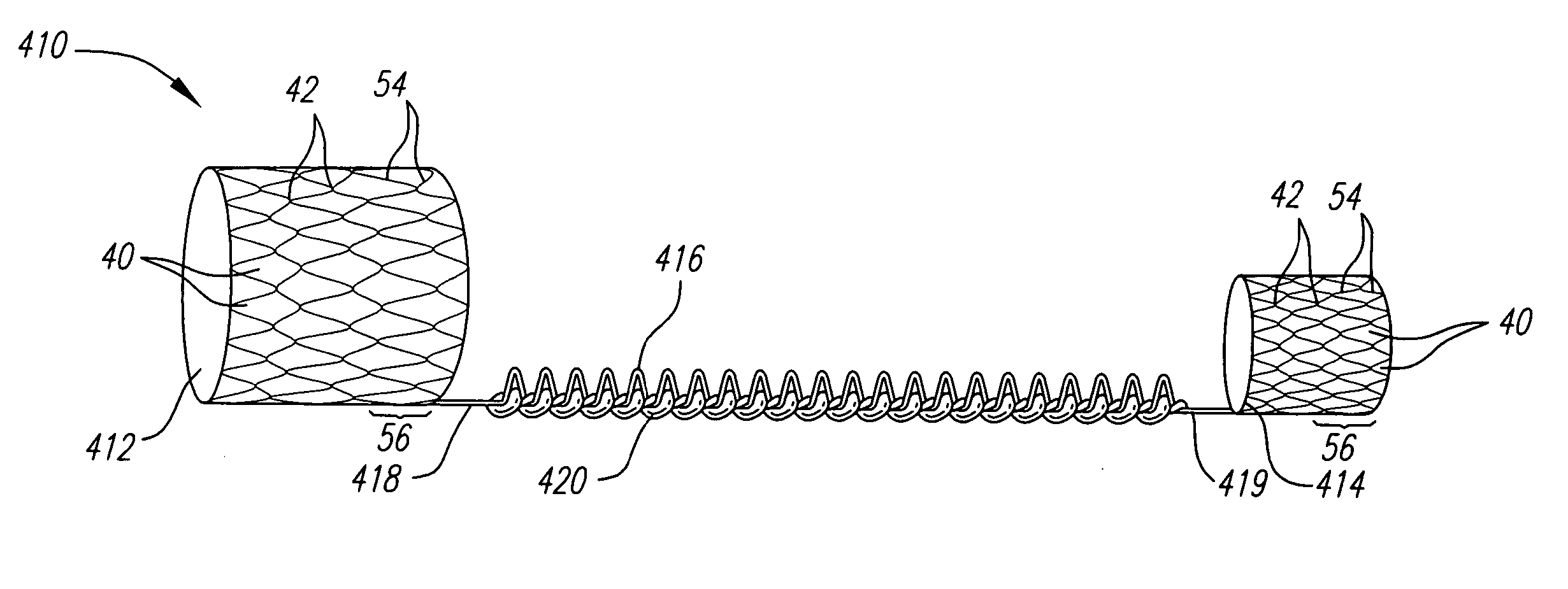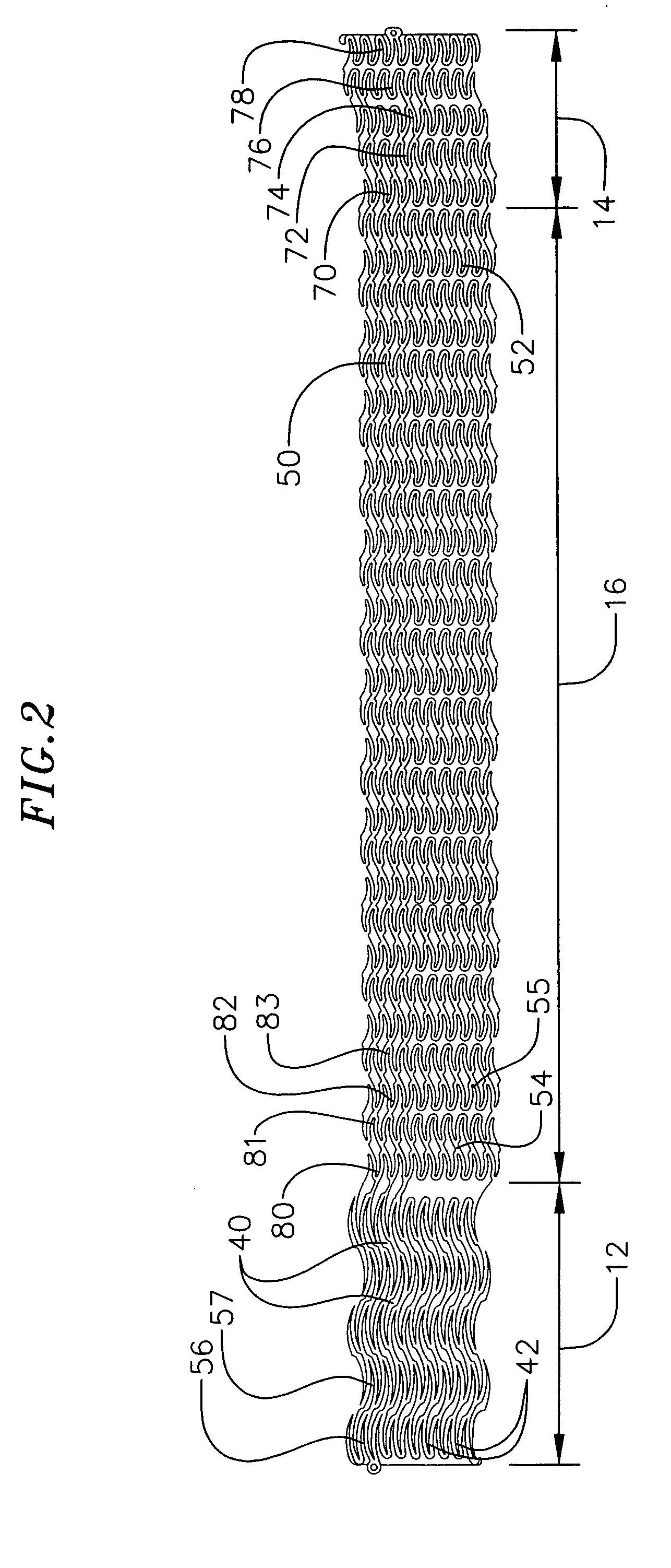Device for changing the shape of the mitral annulus
a technology of mitral valve and annulus, which is applied in the field of endovascular devices, can solve the problems of mitral and tricuspid leaflet tethering and incomplete coaptation in systole, and high morbidity and mortality in these patients, so as to reduce the circumference of the mitral valve annulus, reduce the trauma to the intima of the coronary sinus, and reduce the distance
- Summary
- Abstract
- Description
- Claims
- Application Information
AI Technical Summary
Benefits of technology
Problems solved by technology
Method used
Image
Examples
first embodiment
[0108] The device of the first embodiment is deployed as follows. As shown in FIG. 4, the elongate body 10, in the compressed state, is mounted onto a first balloon 58, which acts as a delivery catheter. The first balloon 58 has a length generally corresponding tn the length of the distal stent section 14 and is inserted so that it is enveloped by the distal stent section. The elongate body 10 and the first balloon 58 are inserted into the coronary sinus 20 from the coronary sinus ostium 24, e.g., until the central stent section 16 is generally aligned with the P2 scallop. Once the elongate body 10 and the first balloon 58 are positioned in the coronary sinus, the first balloon is expanded by introducing, for example, a saline solution through the delivery catheter and into the balloon. Alternately, any biocompatible solution may be used to inflate the balloon. The force of the expansion of the first balloon 58 expands the distal stent section 14 so that its circumference is forced ...
third embodiment
[0122] In that regard, the present invention, as shown in FIGS. 7 and 8, comprises a proximal stent module 200 (FIG. 8) and a distal stent module 205 (FIG. 7). Both the proximal and distal stent modules 200, 205 have a compressed and expanded state, as described above with respect to the previous embodiments.
[0123] In one embodiment, the distal stent module 205 has an anchor section 214, located at the distal end of the distal stent module, and a central section 217. The anchor section 214 includes three loops. A first loop 270 is connected to a second loop 271 at four peaks 42 and the second loop is connected to a third loop 272 at two peaks. Accordingly, the distal stent module will be more flexible in the distal direction. The central stent section 217 includes thirty-six loops. As with respect to the first embodiment described above, alternating pairs of loops are connected at each peak to form rings of four-sided openings 40. Each ring is connected to an adjacent ring at three ...
second embodiment
[0124] As shown in FIG. 8, the proximal stent module 200 has an anchor section 212, located at the proximal end of the proximal stent module 200, and a central section 215. The anchor section 212 is a combination of the proximal stent section 112 and the proximal transitional section 118 as described above with respect to the The central section 215 includes twenty-four loops. Similarly to the central section 217 of the distal stent module 205, alternating pairs of loops are connected at each peak to form rings of four-sided openings 40. Each ring is connected to an adjacent ring at three peaks 42, where the connected portion forms a backbone 254 and the unconnected portion forms a severed region.
[0125] The device of the third embodiment is deployed as follows. The distal stent module 205 in a compressed state is mounted onto a first balloon (not shown), which acts as a delivery catheter. The first balloon has a length generally corresponding to the length of the anchor section 214...
PUM
 Login to View More
Login to View More Abstract
Description
Claims
Application Information
 Login to View More
Login to View More - R&D
- Intellectual Property
- Life Sciences
- Materials
- Tech Scout
- Unparalleled Data Quality
- Higher Quality Content
- 60% Fewer Hallucinations
Browse by: Latest US Patents, China's latest patents, Technical Efficacy Thesaurus, Application Domain, Technology Topic, Popular Technical Reports.
© 2025 PatSnap. All rights reserved.Legal|Privacy policy|Modern Slavery Act Transparency Statement|Sitemap|About US| Contact US: help@patsnap.com



